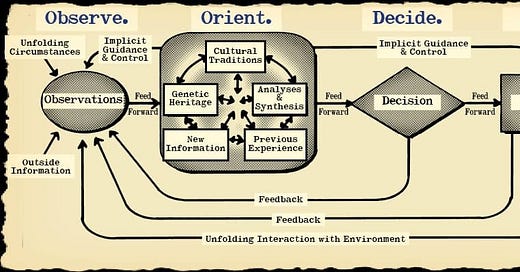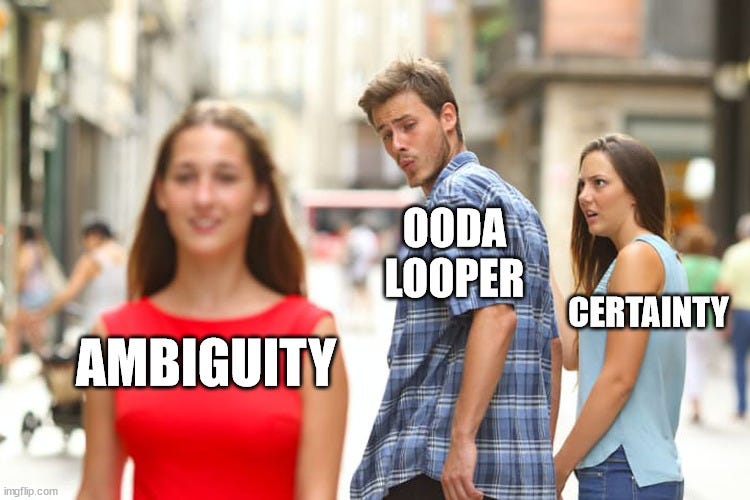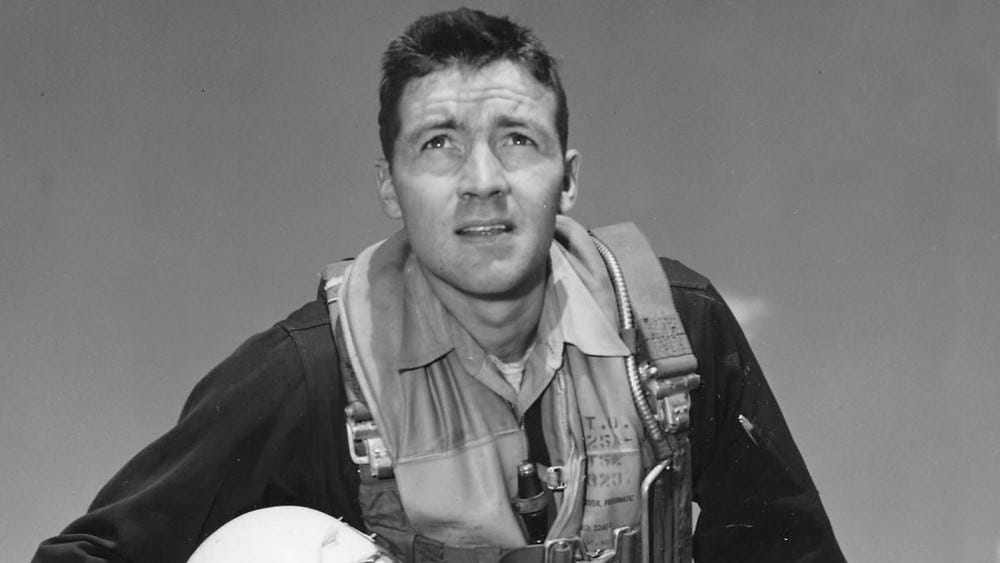From Navigation to Action: The OODA Loop
Consider this an addendum to my previous post, “The Art of Reality Mapping”. The OODA Loop concept is complex enough that it deserves its own post. Conceived by Colonel John Boyd, fighter pilot, instructor, military theorist, and veteran of WWII, Korea, & Vietnam, the OODA Loop is one of the most powerful mental tools ever, with applications in virtually every aspect of life. It makes explicit our decision-making process, which for most of us is implicit, not fully understood, and therefore not optimized for ever-changing conditions. Goodness knows, no one can afford to be complacent about change.
The Observe stage relates directly to reality map creation. Orienting yourself to this map (Boyd uses the term “mental model”) is the key to navigation. Mental models are by nature incomplete. One has to make friends with ambiguity, because it’ll never go away if you’re being honest with yourself.
Your reality map doesn’t have to be perfect, just good enough for you to make a Decision and take Action. These stages are like when a skipper orders the helmsman to steer a course. As the ship proceeds, they will make more observations, reorient themselves, change the course and revise the map as needed.
The relationships among the four main stages include multiple influences, esp. feedback loops, so unlike a unidirectional flow chart, the OODA Loop has a complex dynamic more like a 4-stroke engine. The Loop’s real value emerges through repeated cycling as it continually feeds new observations into successive loops to update the mental model.
A crucial point of the Orient phase is never to cling to a mental model when it fails to match the observed reality. In high-pressure situations like combat, sports, or business competition, cycling through OODA Loops more quickly and competently than the opposition leads to victory.
Boyd literally wrote the book on dogfighting, “Aerial Attack Study,” and as an instructor for the Fighter Weapons School he was undefeated in simulated air-to-air combat. From the Sixties onward his ideas on strategic decision-making spread throughout the military and into the civilian world.
The best OODA Loop summary I’ve seen so far is at the link below. Due to its length you might want to read and listen to it in chunks. Take the OODA for a spin, apply it to everyday challenges, then perhaps long-range planning. In this way your reality map will become a responsive, living tool to help you navigate the timeline, not as a mere spectator, but as a star player.






